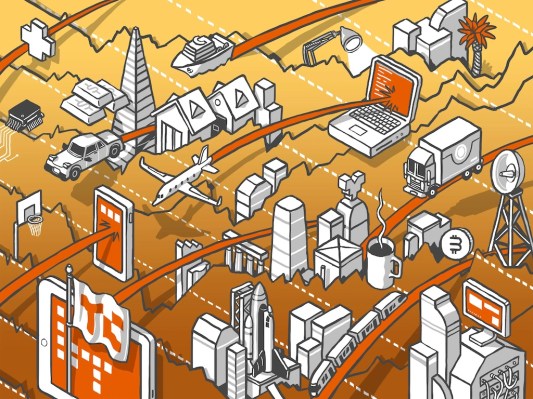That Elon Musk closed his buy of Twitter this week has been wall-to-wall news. With the former executive team out, jokes in and Musk now in control of the social service, a long chapter in technology history has been written.
Views vary regarding what’s next for Twitter, be it looser content moderation guidelines or the return of certain banned users. What Musk intends to do with his new company — a corporate entity he, variously, wanted to influence, take a board seat in, buy, not buy, and, ultimately, bought — will come clearer in the following weeks and months.
You won’t be able to miss the coverage, given the centrality of Twitter to the news cycle and Musk’s ability to keep the press’ attention.
The Exchange explores startups, markets and money.
Read it every morning on TechCrunch+ or get The Exchange newsletter every Saturday.
But before we wrap up this period of tech history, we’d be remiss to not compare the new value of social companies with the price that Musk is paying for Twitter. It was well established before the deal closed that Musk was overpaying for Twitter based on the changing value of tech shares since the transaction was agreed on.
In recent days, however, the values of leading public social companies Meta and Snap have taken fresh lumps. Their falling values change the calculus of Musk’s Twitter purchase. How does the deal look now?
 More expensive. So much so that the challenge ahead of Musk to turn a profit on the purchase of the company appears steep. And never more vertiginous than in the wake of Snap’s recent valuation decapitation and Meta’s falling value.
More expensive. So much so that the challenge ahead of Musk to turn a profit on the purchase of the company appears steep. And never more vertiginous than in the wake of Snap’s recent valuation decapitation and Meta’s falling value.
Cost
We’ve looked at the price that Musk is paying for Twitter in comparison to select rivals in the past. We’re running the experiment again today, around closing time, and with new earnings data to update our math. Let’s run through the key numbers to understand why Musk might have wanted out of the Twitter transaction.
Following its Q3 earnings and resulting selloff, here are Snap’s key metrics, per YCharts data, collected before the open this morning:
- Price/sales ratio: 3.359
- Price/earnings ratio: N/A
- Price/earnings forward: 68.59
Price/sales ratios, recall, are essentially revenue multiples. However, we tend to calculate revenue multiples based on annualized quarters (for larger private tech companies) or months (for early-stage startups). Public companies’ revenue multiples are calculated using trailing 12-month results, making them appear a little higher than they would be if expressed in our normal terms.
What matters for our purposes is that Snap’s price/sales ratio was under 3.4x before the market open today. It fell under the 2.8x mark earlier in the month before recovering somewhat. Zooming our perspective out to 2022 thus far, Snap traded as high as 17.8x its trailing sales at the start of the year. When the Twitter-Musk deal was agreed upon in late April, Snap traded for around 10.8x its trailing revenues. (All data via YCharts.)
Let’s complete the same experiment with Meta:
- Price/sales ratio: 2.270
- Price/earnings ratio: 9.336
- Price/earnings forward: 10.51
Meta has undergone a similar multiples compression this year. It started 2022 trading for around 8.2x its trailing revenues. That figure fell to around 4.4x at the time that Musk agreed to buy Twitter.
Now, to the main show. How did Twitter look this morning under the same lens? As follows:
- Price/sales ratio: 8.225
- Price/earnings ratio: N/A
- Price/earnings forward: 51.11
Oof. Parsing the figures, Twitter is actually cheaper than Snap in terms of future profitability, but given that the Snapchat parent company has a history of stringent losses, that’s perhaps beside the point. What matters more, from where we sit, is that Musk is paying 2.45x as much for Twitter shares in prices/sales terms than Snap investors today. And he’s paying 3.62x as much for Twitter stock under the same math when compared to Meta.
That’s, well, very expensive. You may believe that Twitter can be unlocked as a business, and quickly, under new leadership. That there is revenue growth just around the corner. But even if Twitter’s fortunes do improve while private, with public markets trending the other direction, it’s uphill for Musk to come out even breakeven on the transaction.
For long-term Twitter shareholders, however, Musk might have a new name: Father Christmas.
